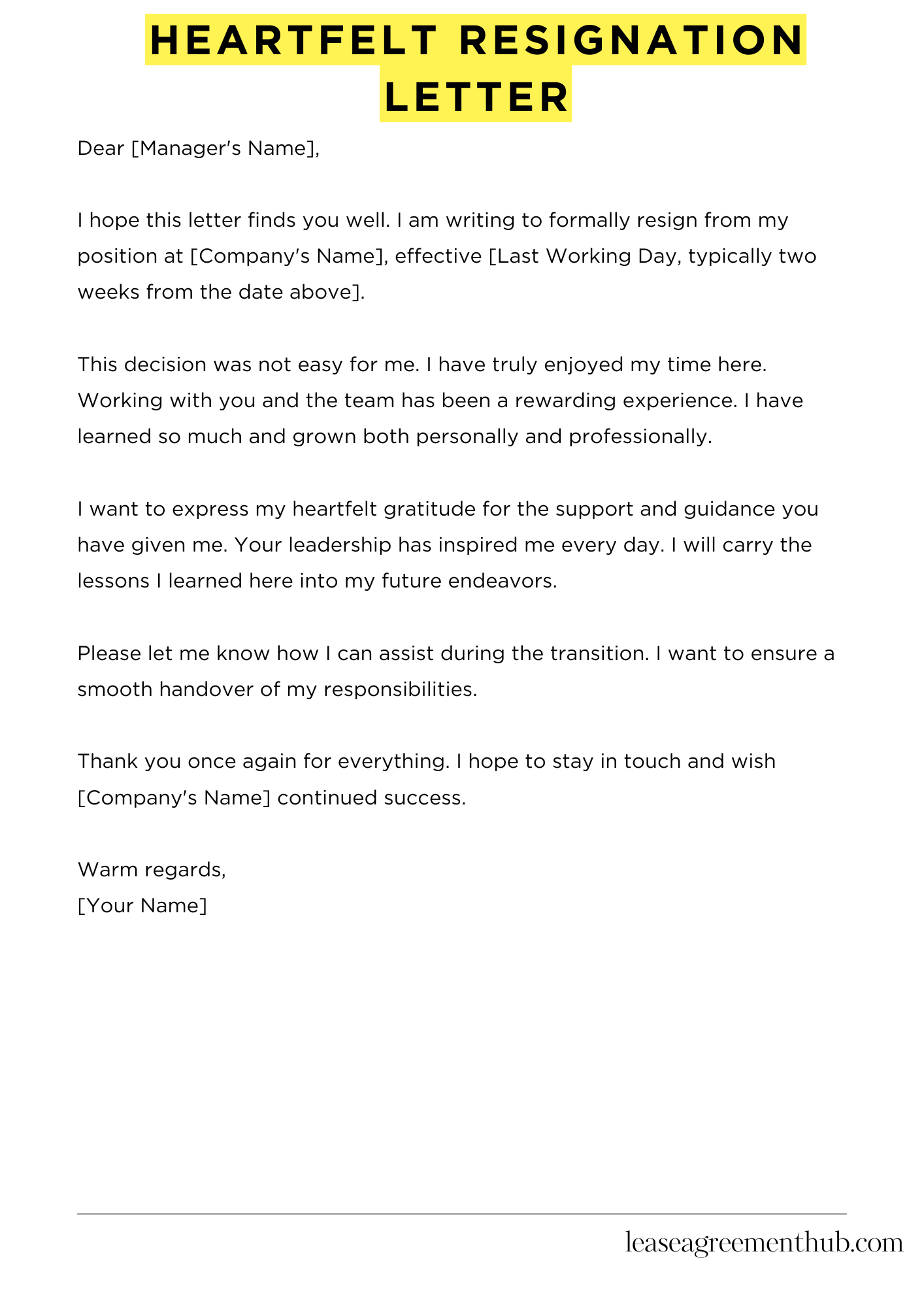A heartfelt resignation letter expresses sincere gratitude while resigning. It goes beyond formalities, acknowledging your experiences and the relationships built.
Finding the right words can be tough. That’s why we’re providing templates and examples of heartfelt resignation letters. Use these as starting points, adapting them to your situation.
Whether you’re leaving for a new opportunity or a career change, these samples will help you craft a sincere and professional farewell.
Heartfelt Resignation Letter
[Your Name]
[Your Address]
[City, State, Zip Code]
[Email Address]
[Phone Number]
[Date]
[Manager’s Name]
[Company’s Name]
[Company’s Address]
[City, State, Zip Code]
Dear [Manager’s Name],
I hope this letter finds you well. I am writing to formally resign from my position at [Company’s Name], effective [Last Working Day, typically two weeks from the date above].
This decision was not easy for me. I have truly enjoyed my time here. Working with you and the team has been a rewarding experience. I have learned so much and grown both personally and professionally.
I want to express my heartfelt gratitude for the support and guidance you have given me. Your leadership has inspired me every day. I will carry the lessons I learned here into my future endeavors.
Please let me know how I can assist during the transition. I want to ensure a smooth handover of my responsibilities.
Thank you once again for everything. I hope to stay in touch and wish [Company’s Name] continued success.
Warm regards,
[Your Name]

How to Write Heartfelt Resignation Letter
Understand the Importance of a Resignation Letter
Writing a resignation letter is more than just a formality. It serves as a professional way to inform your employer that you are leaving. A heartfelt resignation letter can help maintain a positive relationship with your employer and colleagues. This can be crucial if you ever need a reference or consider returning to the company in the future.
Choose the Right Tone
The tone of your resignation letter should reflect your feelings about leaving. If you had a positive experience, express gratitude. If your time was challenging, focus on the lessons learned. Regardless of your situation, keep your tone respectful and professional. This will help ensure that your departure is seen in a positive light.
Structure Your Letter Properly
A well-structured resignation letter typically includes several key elements. Start with your address and the date at the top. Next, include the employer’s name and company address. Then, begin the letter with a clear statement of resignation. Follow this with your reasons for leaving, if appropriate. Finally, express gratitude and offer assistance during the transition.
Be Honest but Tactful
While honesty is important, tact is equally crucial. If you are leaving due to negative experiences, avoid harsh criticism. Instead, focus on your desire for new opportunities or personal growth. This approach allows you to be truthful while maintaining professionalism. Remember, your letter may be kept on file, so consider how your words may be perceived in the long run.
Proofread Before Sending
Before submitting your resignation letter, take the time to proofread it carefully. Spelling and grammatical errors can undermine your professionalism. Make sure your letter is clear and concise. A well-written letter reflects your commitment to professionalism, even as you prepare to leave. Taking this final step shows respect for your employer and the company.
Related: